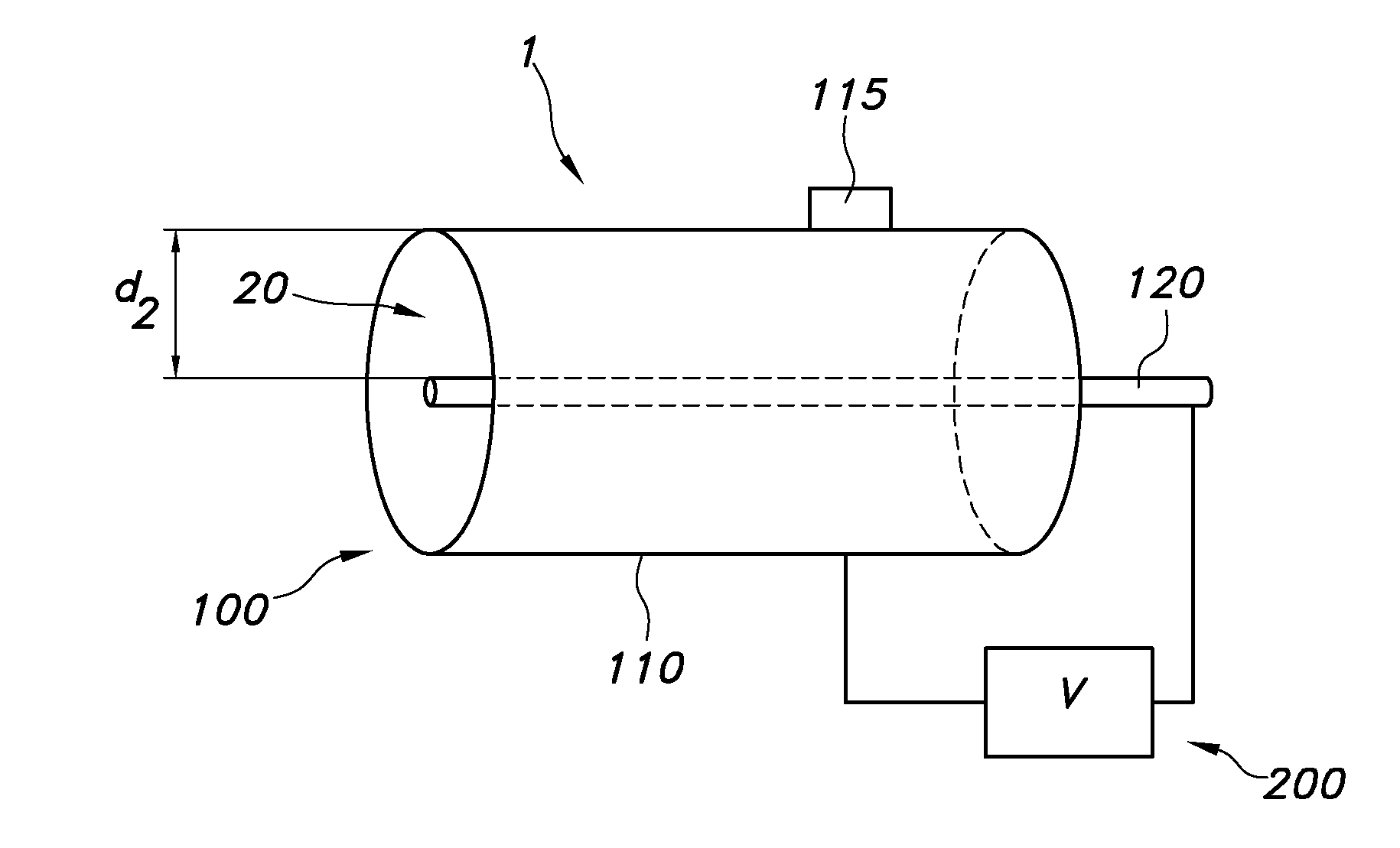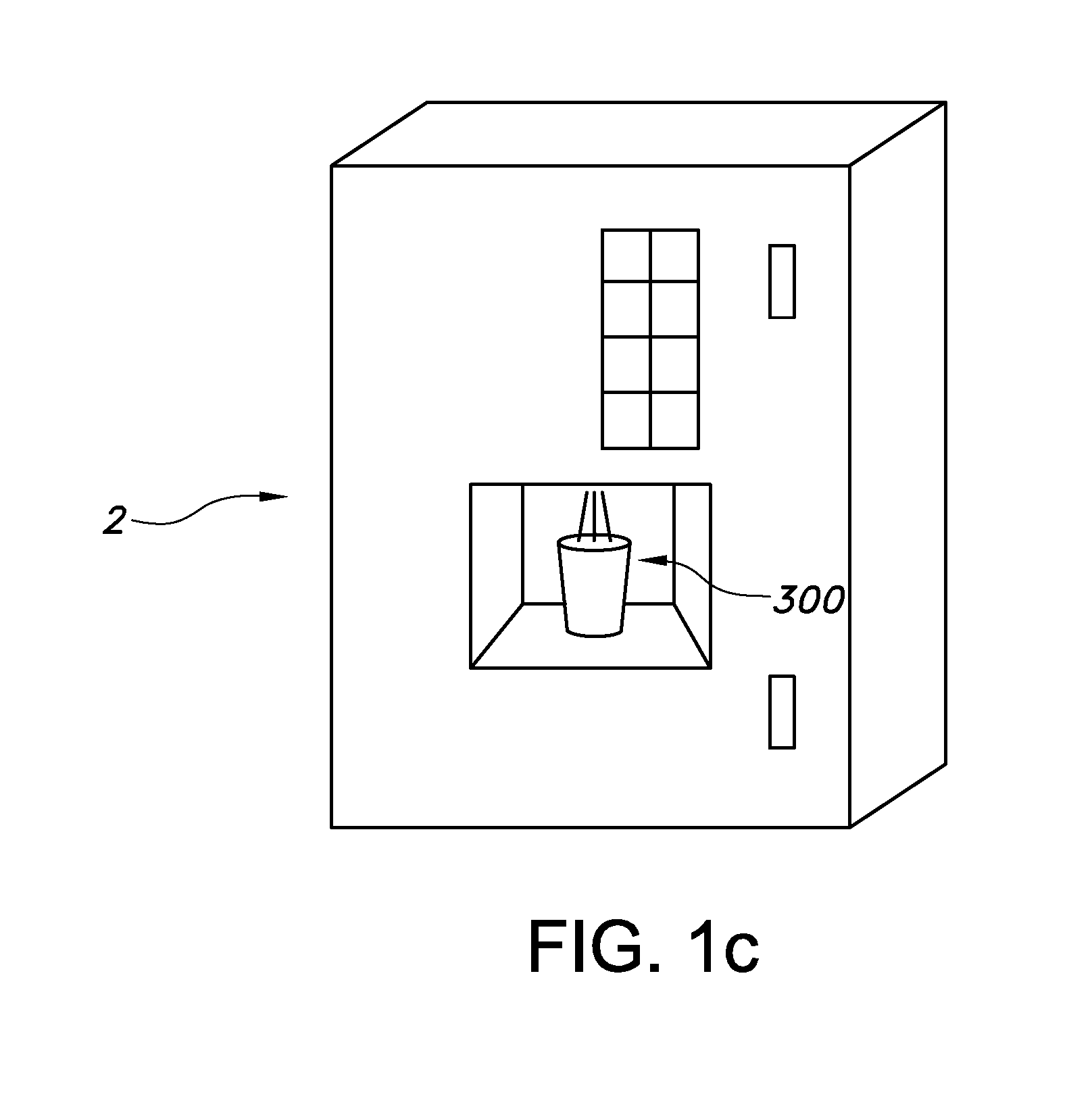Electrochemical descaling by pulsed signal reversal
a pulsed signal and descaling technology, applied in the direction of heating types, cleaning using liquids, immersion heating arrangements, etc., can solve the problems of scale formation on the heating elements, affecting the service life of the steam generation device, and the steam generation device may not be fit to be used anymore, so as to prevent or reduce scaling and prevent or reduce the formation of scale on the heating elements
- Summary
- Abstract
- Description
- Claims
- Application Information
AI Technical Summary
Benefits of technology
Problems solved by technology
Method used
Image
Examples
examples
Water Preparation
[0065]Stock solutions of CaCl2.2H2O (65.6 gr / ltr), MgSO4.7H2O (38 gr / ltr) and NaHCO3 (76.2 gr / ltr) were made. Standard hard water was made by mixing 50 gram of each stock solution into 9 liter of de-ionized water and adding up to 10 liter. The resulting water had a total hardness of 16.8 0DH and a temporary hardness of 11.2 0DH.
[0066]Total hardness is defined as 2.8×2×[mmol / ltr Ca+mmol Mg / ltr]. Temporary hardness is defined as 2.8×[mmol HCO3− / ltr].
[0067]The first series of examples are comparative examples. These examples show that not each AC signal leads to the desired results and that tweaking of an AC potential difference also does not always lead to the desired results.
Corrosion Experiments (Low Temperature)
[0068]In the following examples the effect of various parameters is shown especially on the corrosion of the electrodes when the amplitude is increased. In a typical experiment two stainless steel electrodes (316 grade) of 2.5 and 6 mm diameter were immersed...
experiment 1
[0082]A sinusoidal AC signal with amplitude 2.8V and frequency 200 Hz was applied across the two electrodes. Pitting corrosion at the outer tube and coloration of both electrodes occurred.
experiment 2
[0083]A sinusoidal AC signal with amplitude 2.8V and frequency 1000 Hz was applied across the two electrodes. No corrosion occurred. Calc build-up almost absent.
PUM
| Property | Measurement | Unit |
|---|---|---|
| AC frequency | aaaaa | aaaaa |
| temperature | aaaaa | aaaaa |
| AC frequency | aaaaa | aaaaa |
Abstract
Description
Claims
Application Information
 Login to View More
Login to View More - R&D
- Intellectual Property
- Life Sciences
- Materials
- Tech Scout
- Unparalleled Data Quality
- Higher Quality Content
- 60% Fewer Hallucinations
Browse by: Latest US Patents, China's latest patents, Technical Efficacy Thesaurus, Application Domain, Technology Topic, Popular Technical Reports.
© 2025 PatSnap. All rights reserved.Legal|Privacy policy|Modern Slavery Act Transparency Statement|Sitemap|About US| Contact US: help@patsnap.com



